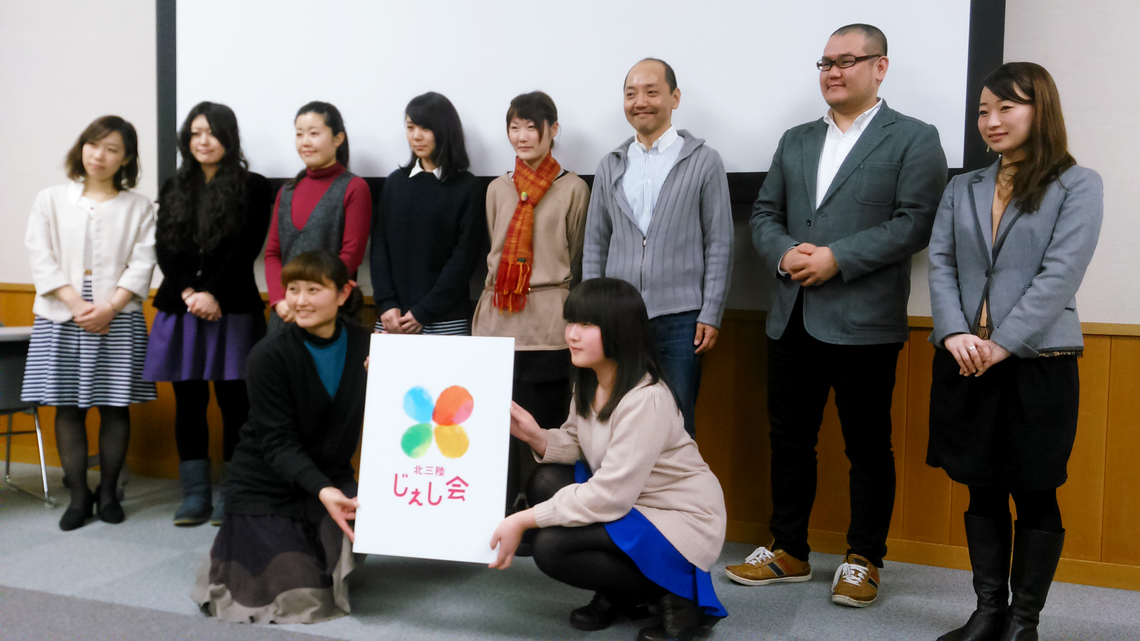Note: This website was automatically translated, so some terms or nuances may not be completely accurate.
Uncovering Local Resources Through the Power of Community Pride ~ Activity Report from Iwate Prefecture's "Hokusanriku Jeshikai"
The regional revitalization project team "Hokusanriku Jeshikai" in Kuji, Iwate Prefecture (Northern Sanriku), the filming location for the NHK morning drama "Amachan," held an activity report meeting at the Kuji District Joint Government Building on March 7, six months after its launch.
How can the momentum of the "Amachan" boom be preserved as a lasting asset for the region? Driven by this challenge, the "North Sanriku Jessi-kai" focused on "Jessi (Women's) Power" as the key to regional strength. Led by Iwate Prefecture and local NPOs/organizations, and at the call of the Kuji Junior Chamber and the Iwate Prefecture Northern Regional Promotion Bureau, twelve active "Jeshis" from the Kuji area gathered. Three coordinators from Dentsu Inc., who had been requested to provide support, also participated.
At the report meeting, it was reported that over the past six months, leveraging the information-gathering capabilities of local "Jesi," the following three actions were implemented:
1.Conducting location scouting to discover regional resources perceived as the charm of North Sanriku.
2.Selecting resources that inspire thoughts like "I want to experience this again," "I want to eat this again," "I want to visit in a different season," or "I want to come back next year."
3. Building on this, they edited the selected items under the concept of Kuji's appeal: "A land where beautiful people live beautifully."
Through projects like "Hirono Color"—where Hirono Town's handmade artisans and therapists gather to create a space women can enjoy—participating in "Seaweed Shabu-Shabu" using Hirono's fresh seaweed, and joining "Hirono Emotion"—where residents along the Hachinohe Line wave flags and hands to welcome train passengers—they rediscovered numerous "treasures" within the Kuji region.
Ayako Tabei, a former planner at Dentsu Inc. Tech, suggested marketing techniques are effective for revitalizing towns. "Marketing is about considering how to create feelings that make people think 'That's nice,' how to create value, and how to establish systems that sustain that. It can be applied to activities that draw out a region's appeal," she explained. Following this, Takuya Kagata, a marketing planner at Dentsu Inc. Marketing Solutions Bureau, commented, "When applying marketing, it's crucial to find the 'local passion.'" He suggested, "Unless the sequence is that residents genuinely feel they are living happily, and people visit specifically for that vitality, the activities of the Jeshi Association may not be sustainable."
Yoshinobu Yokoo, Creative Director at the company, emphasized that regional revitalization hinges on whether people genuinely feel their town, their family, and themselves are "good." He concluded, "What matters is the resolve to say, 'I will find happiness here.' That allows self-affirmation and sparks energy. People who believe this town is the best become the driving force for revitalization."
Finally, the Dentsu Inc. team presented the Kitashimriku Jeshikai with a logo mark (photo below).
Mr. Kagata reflected, "This past half-year has shown me firsthand that when genuine local love exists, and that love becomes attractive to outsiders, it generates tremendous power for regional revitalization."
Was this article helpful?